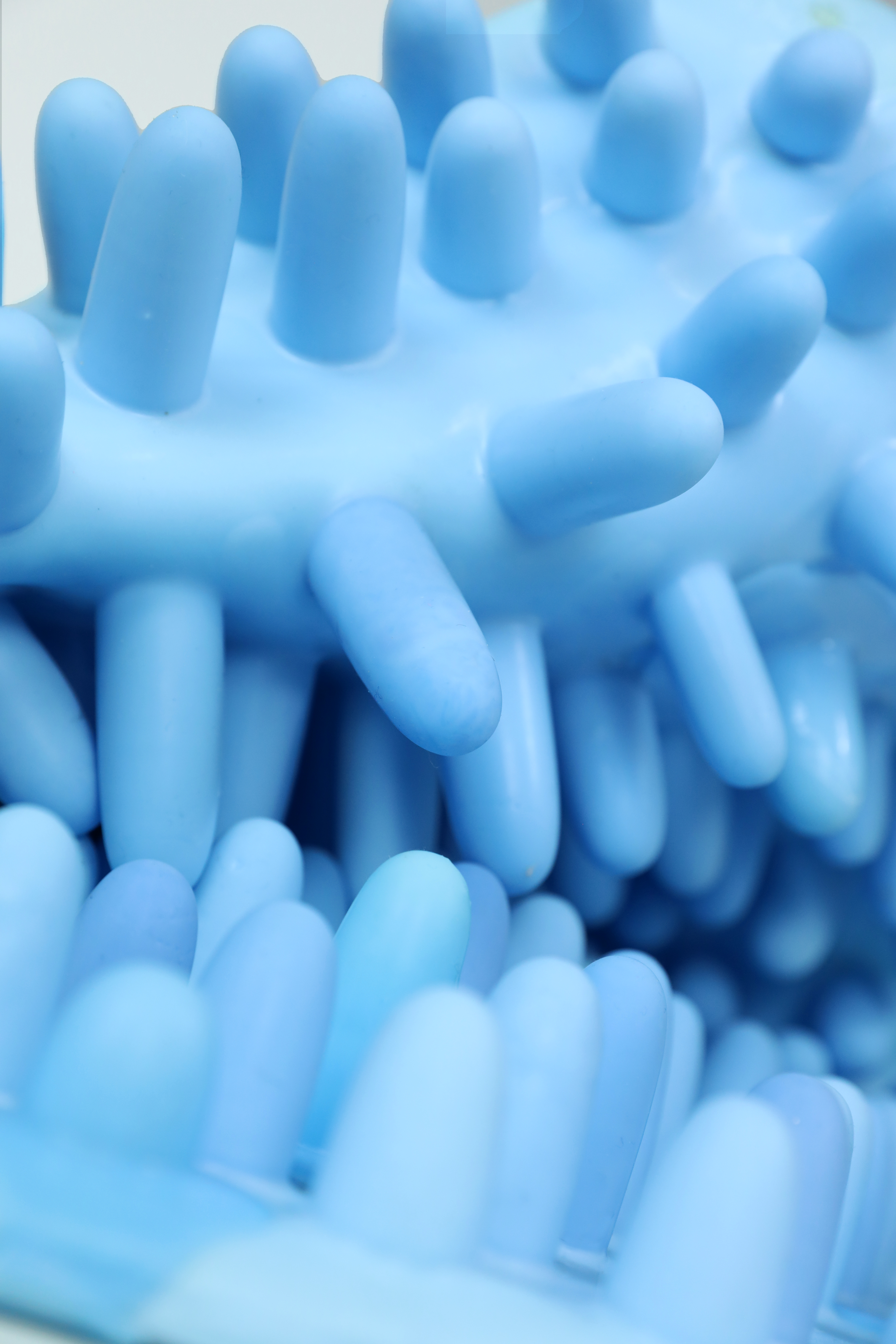

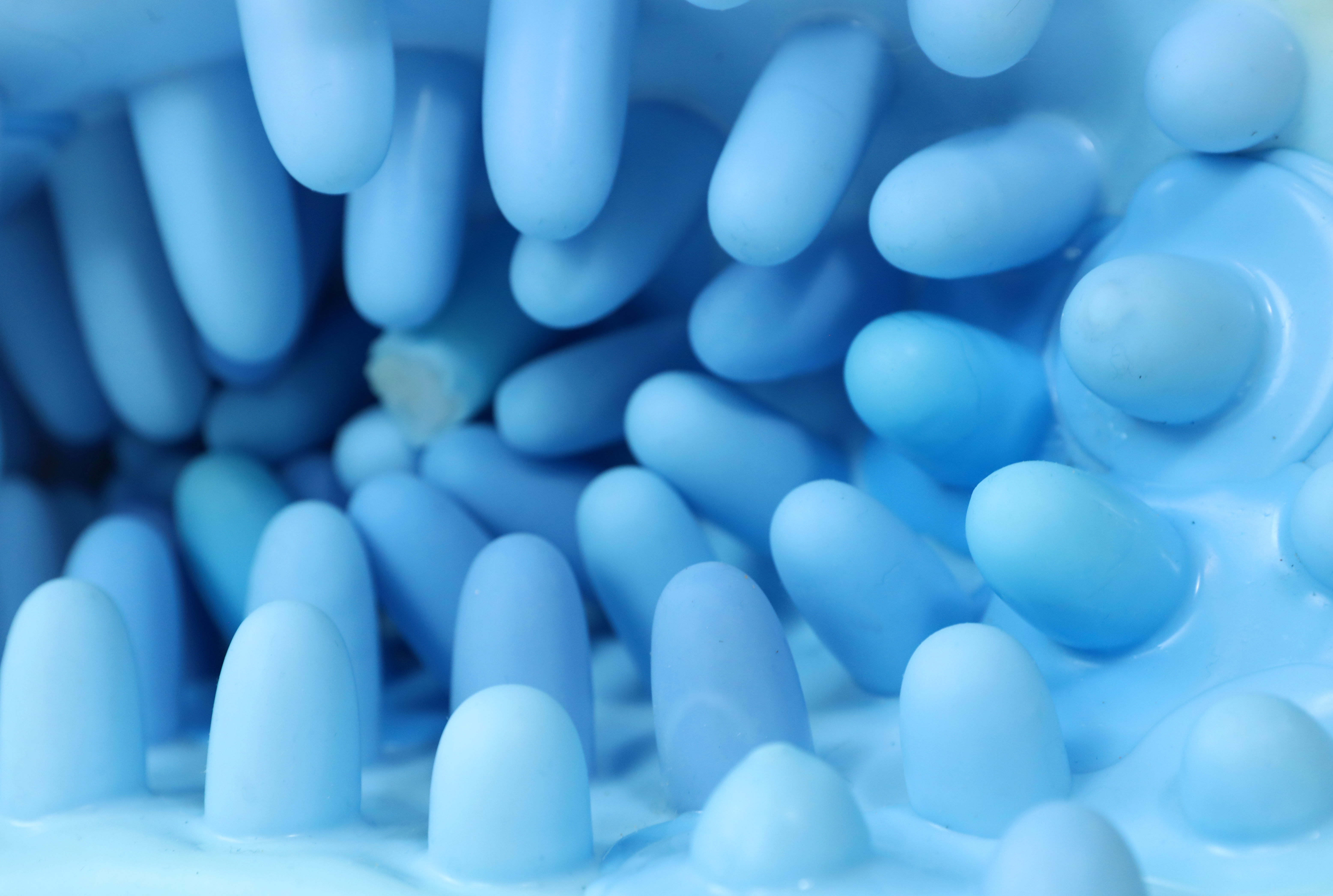
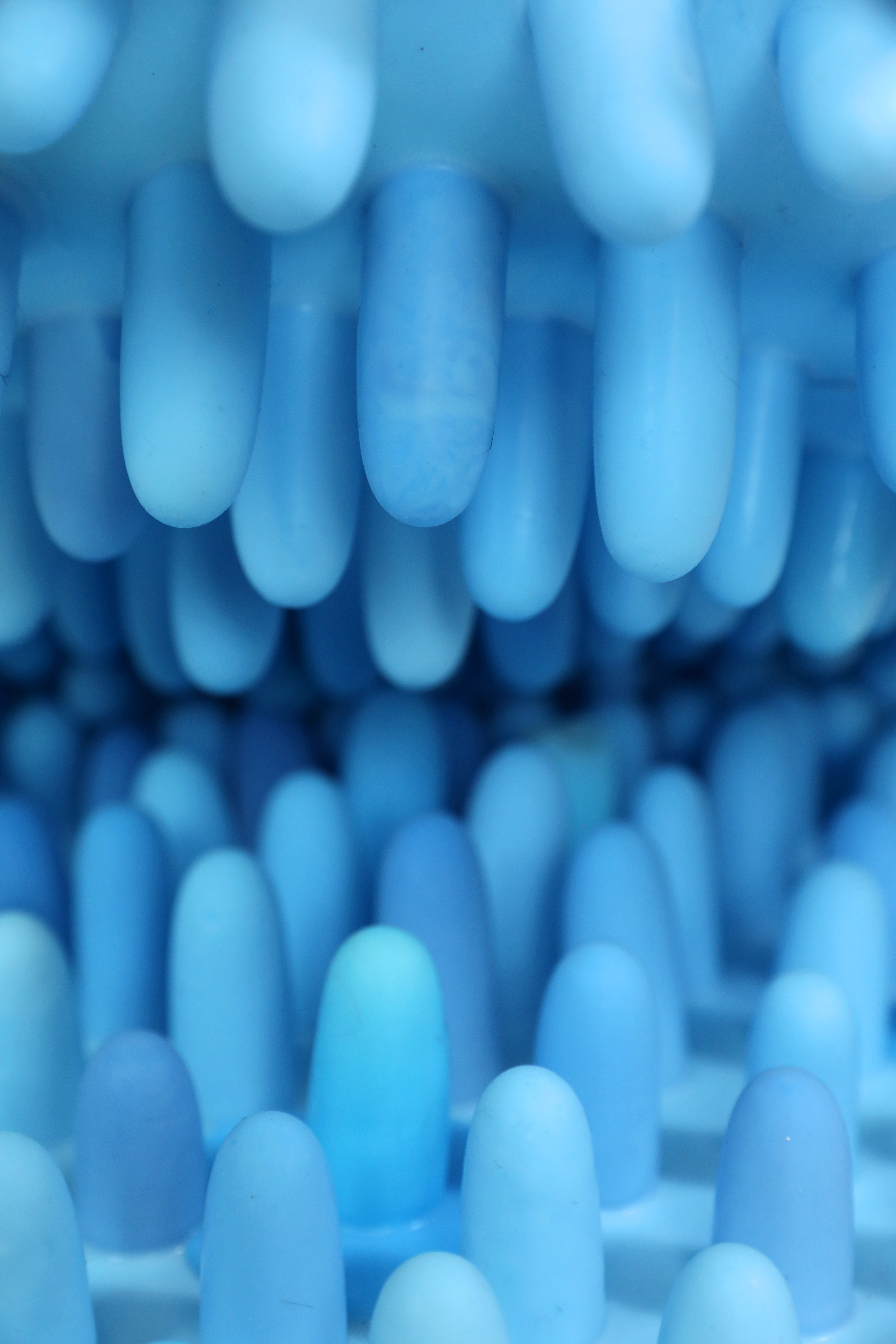
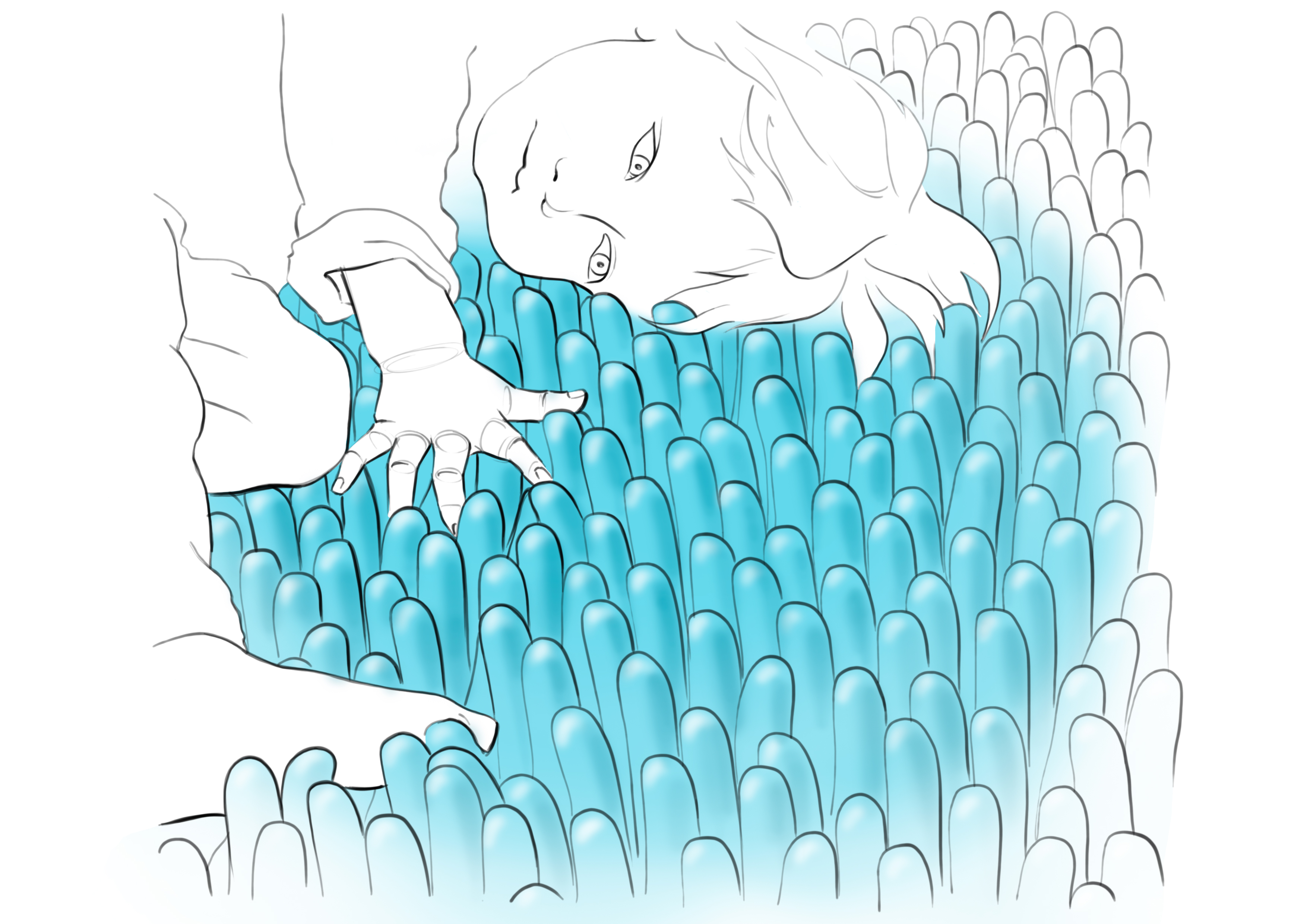
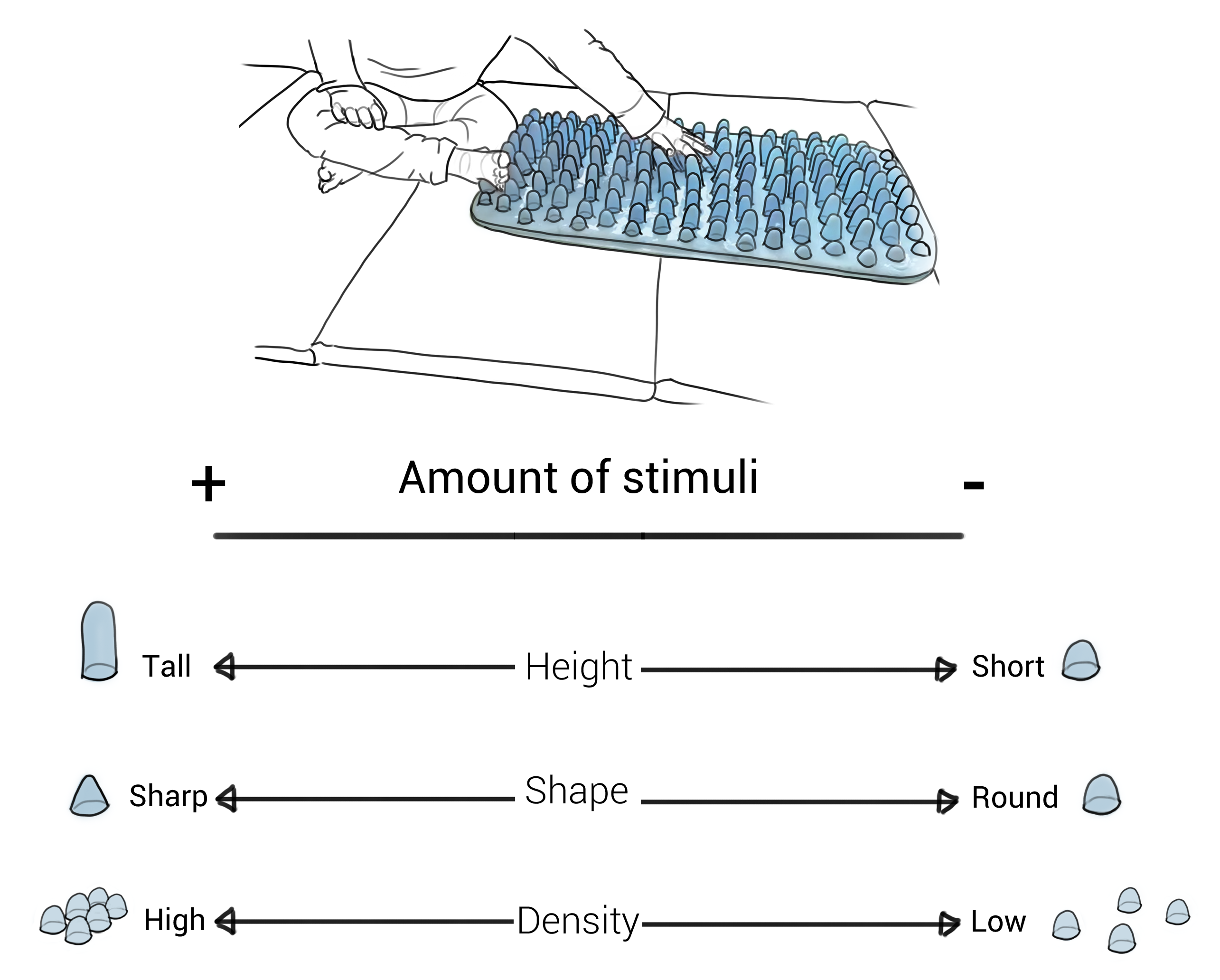
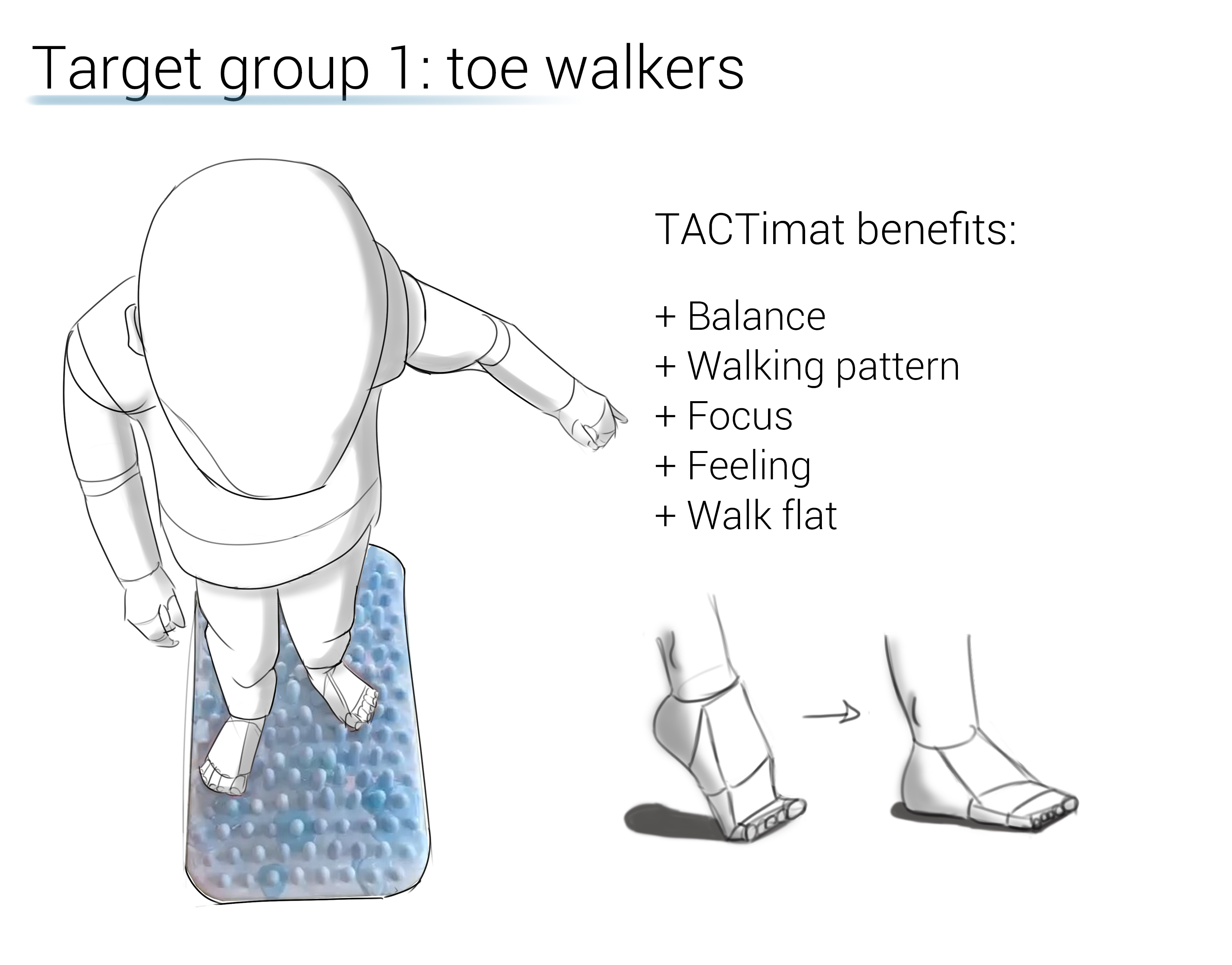
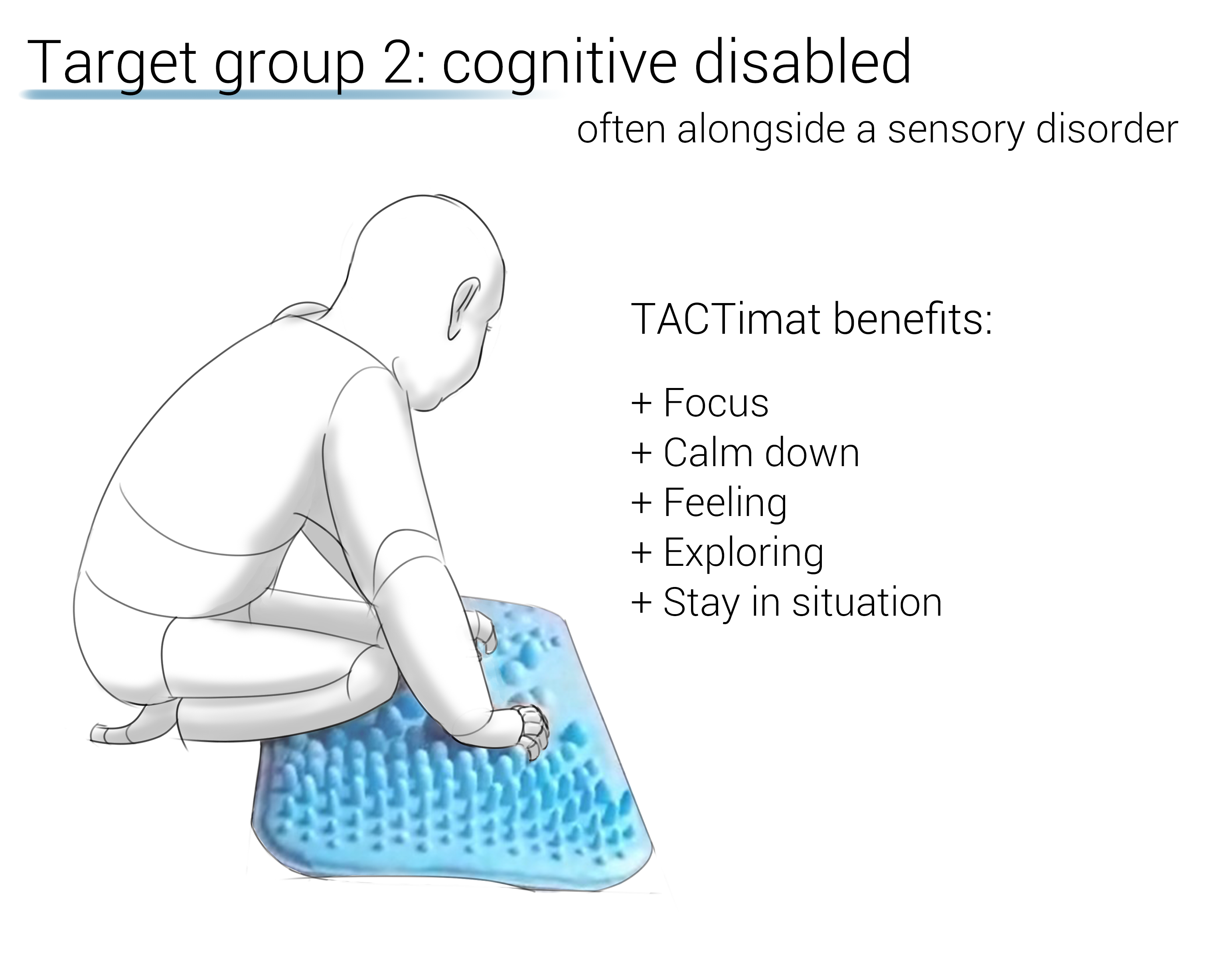
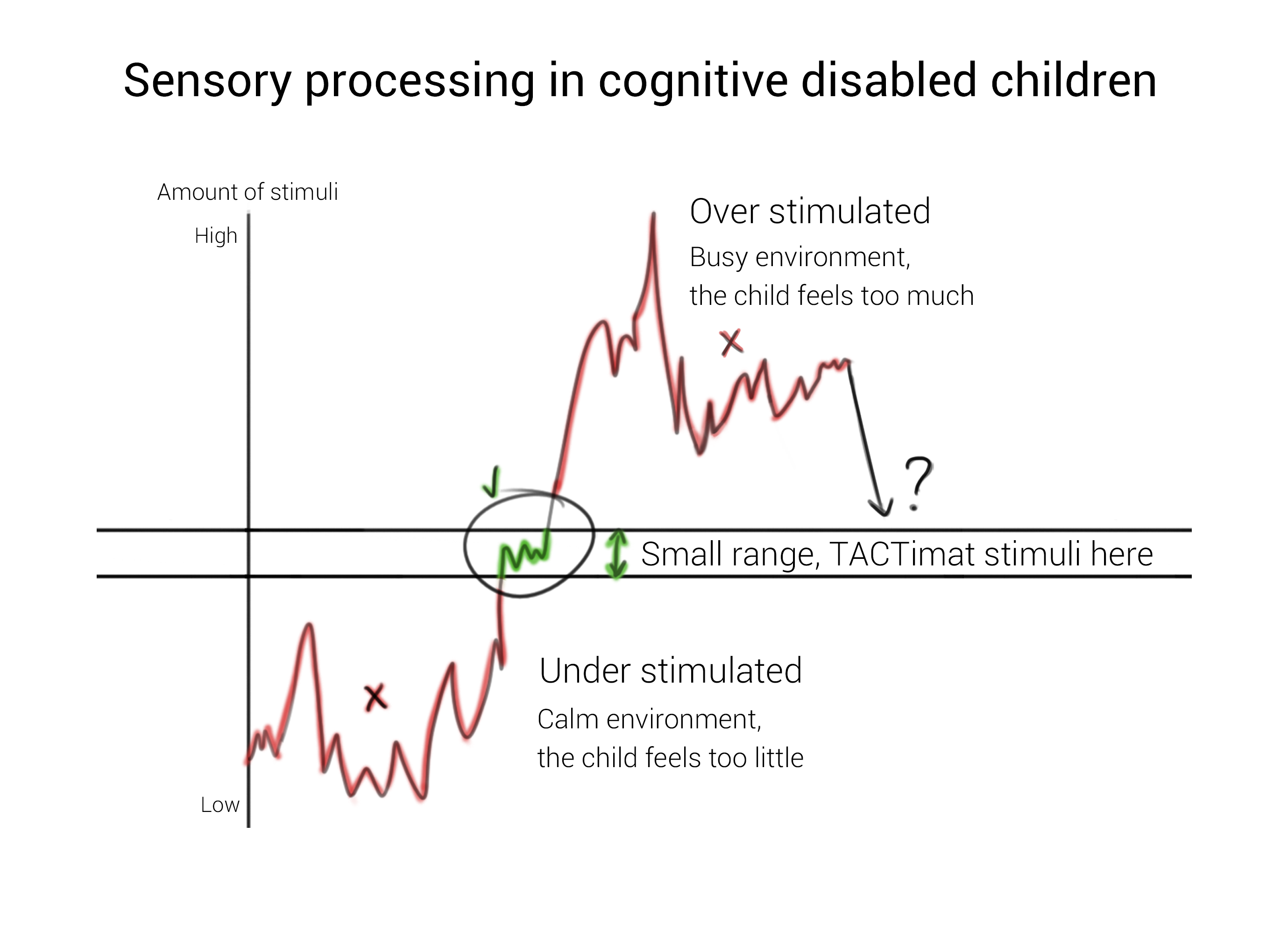
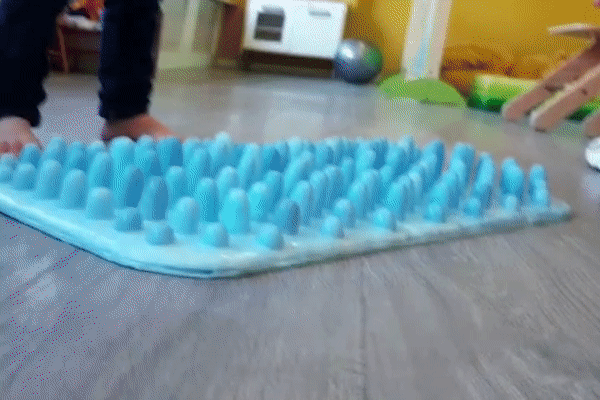
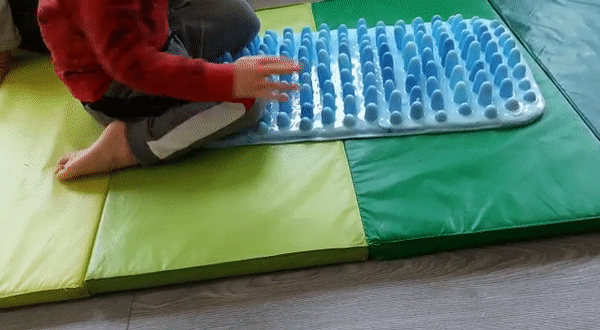
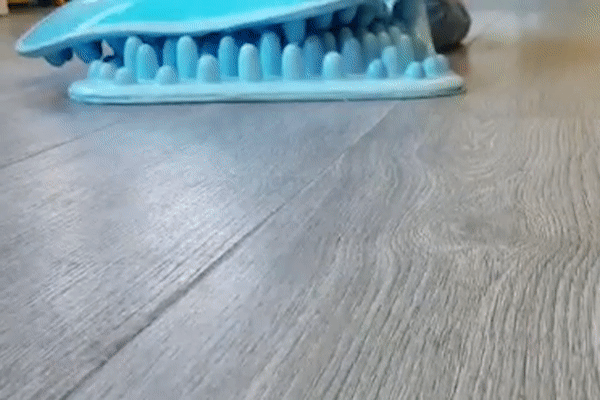
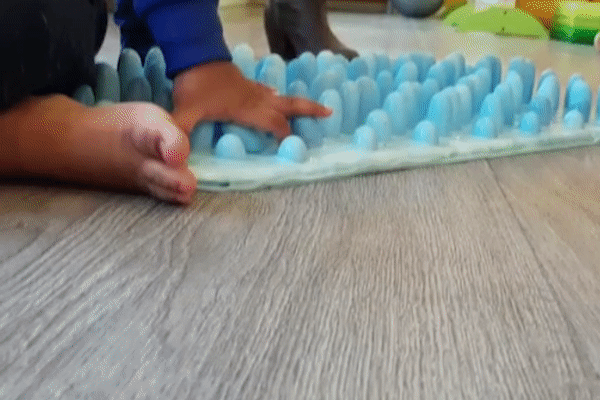
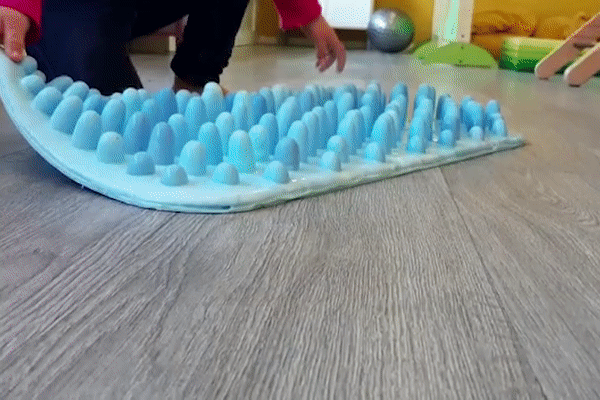
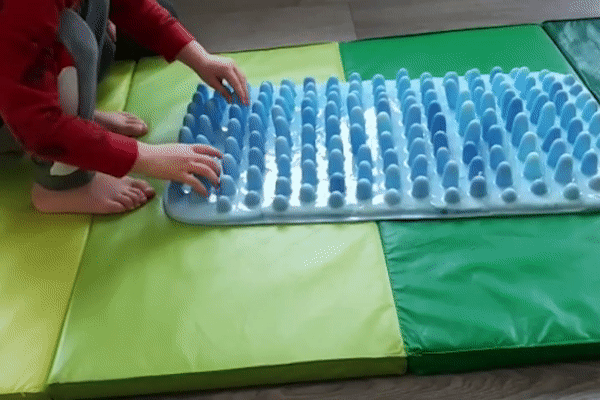
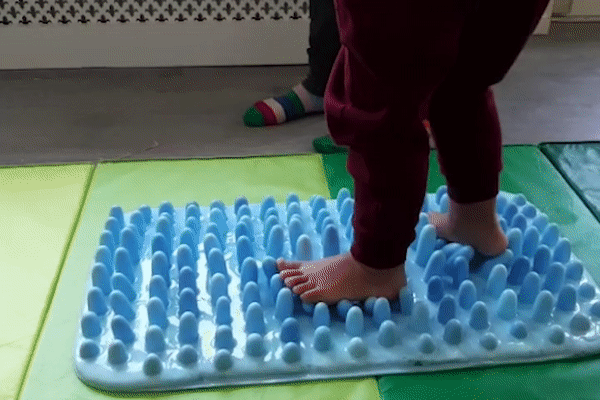
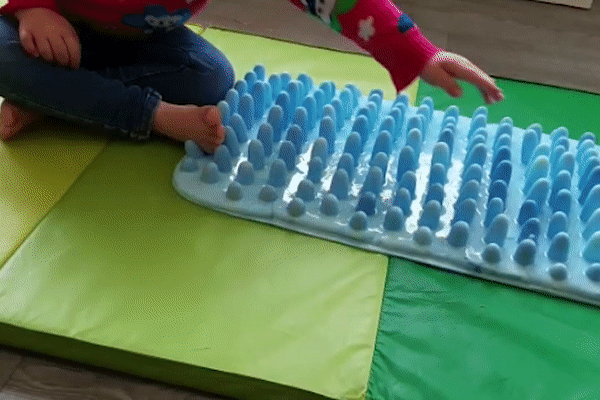
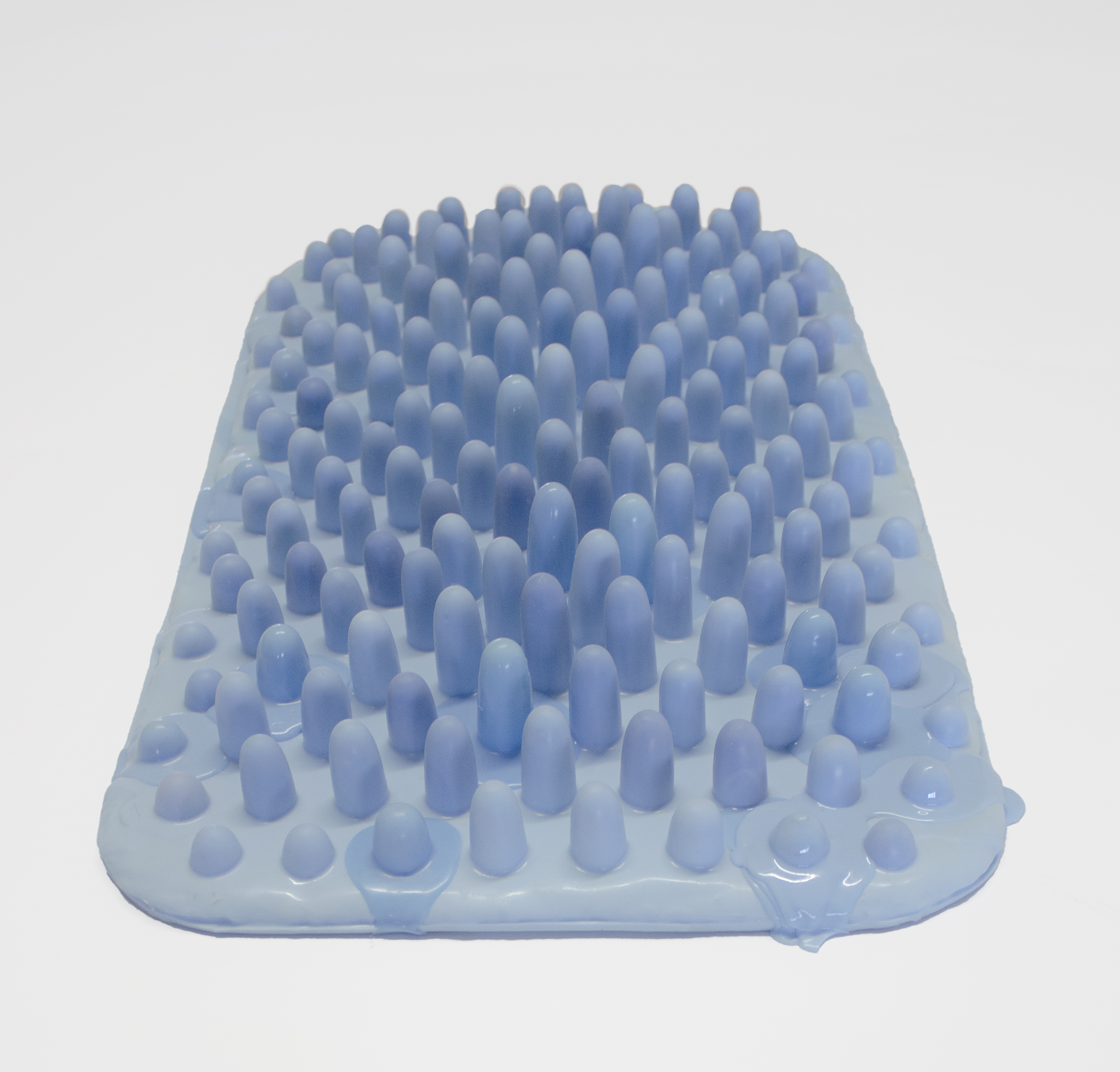
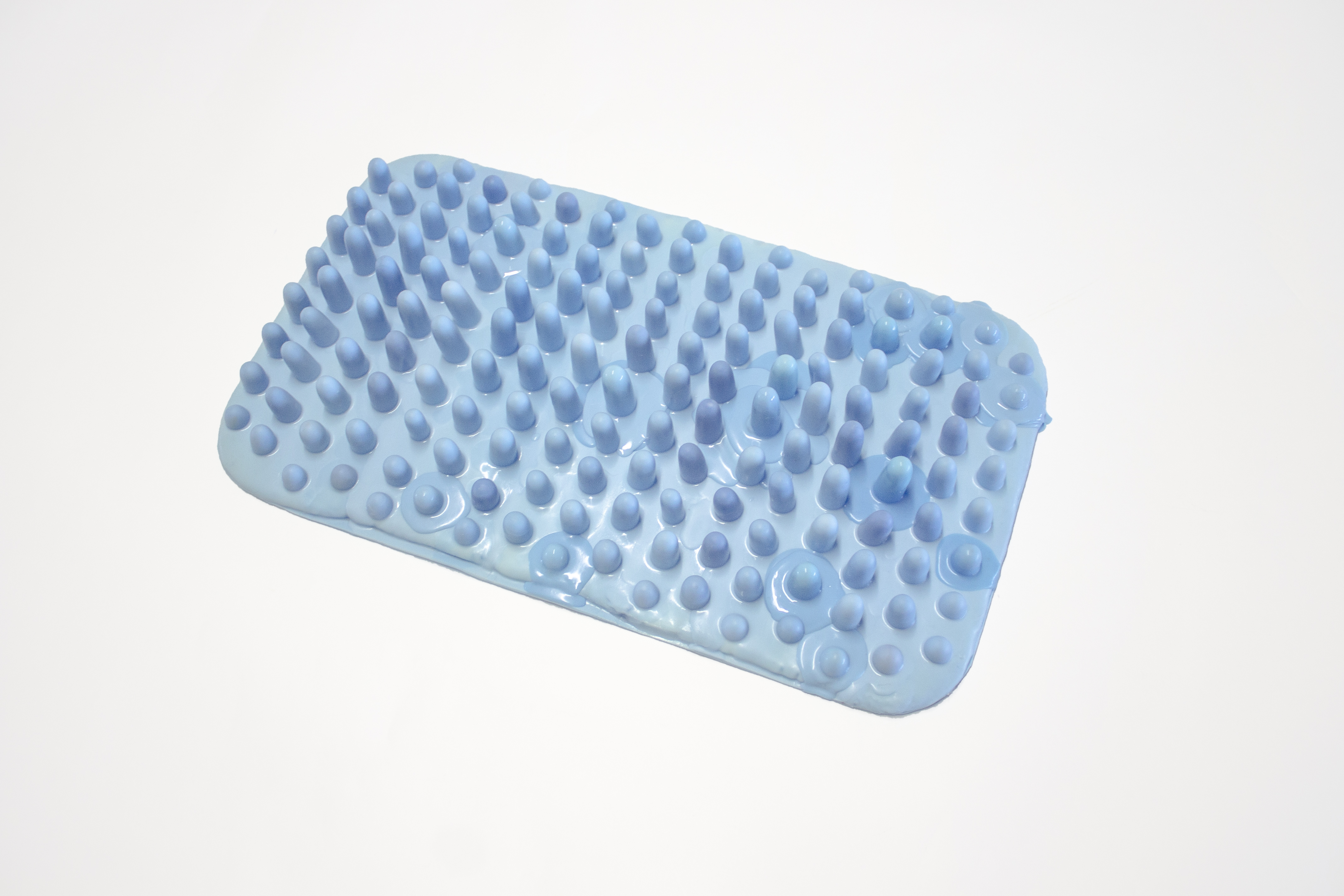
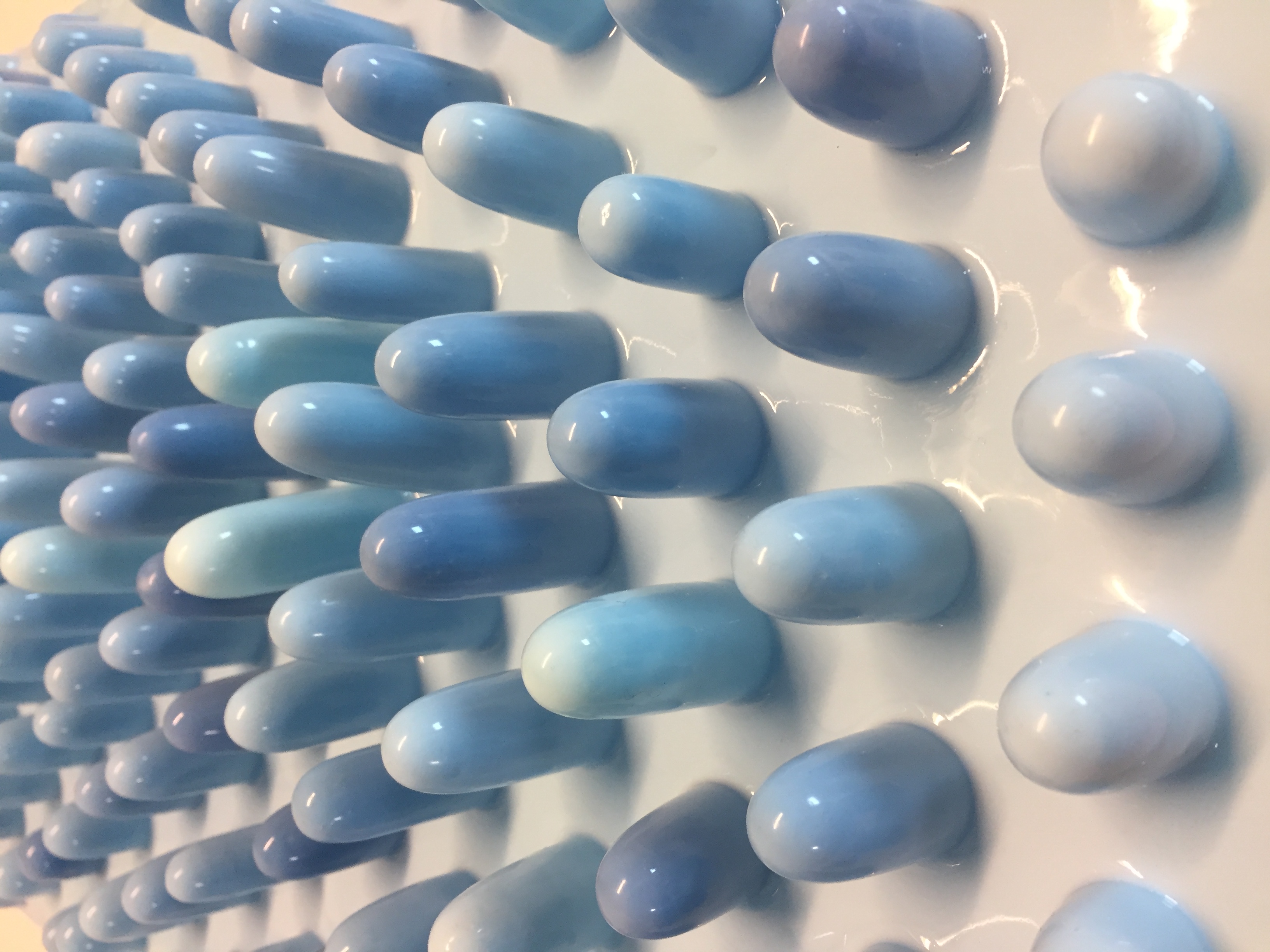
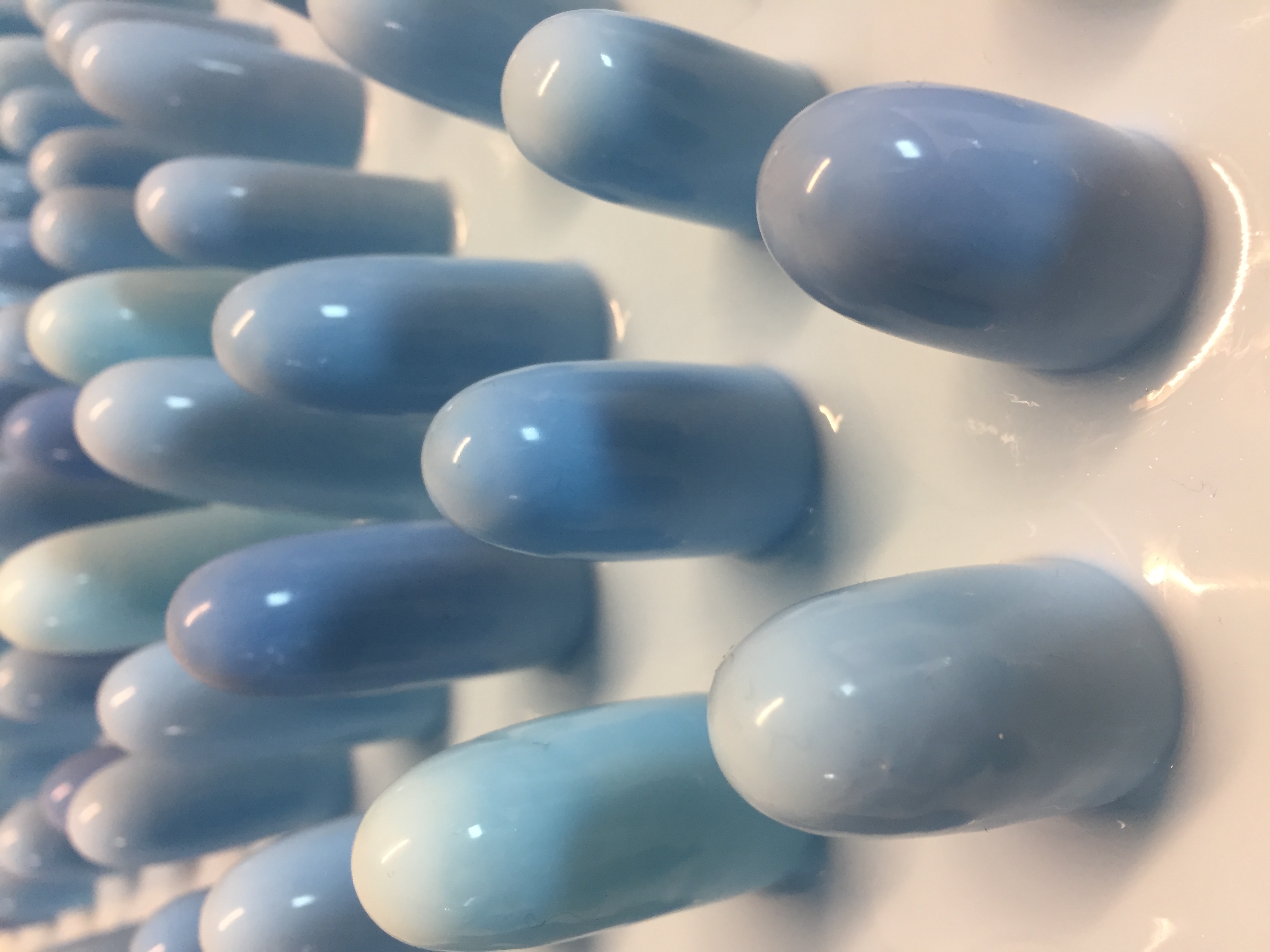
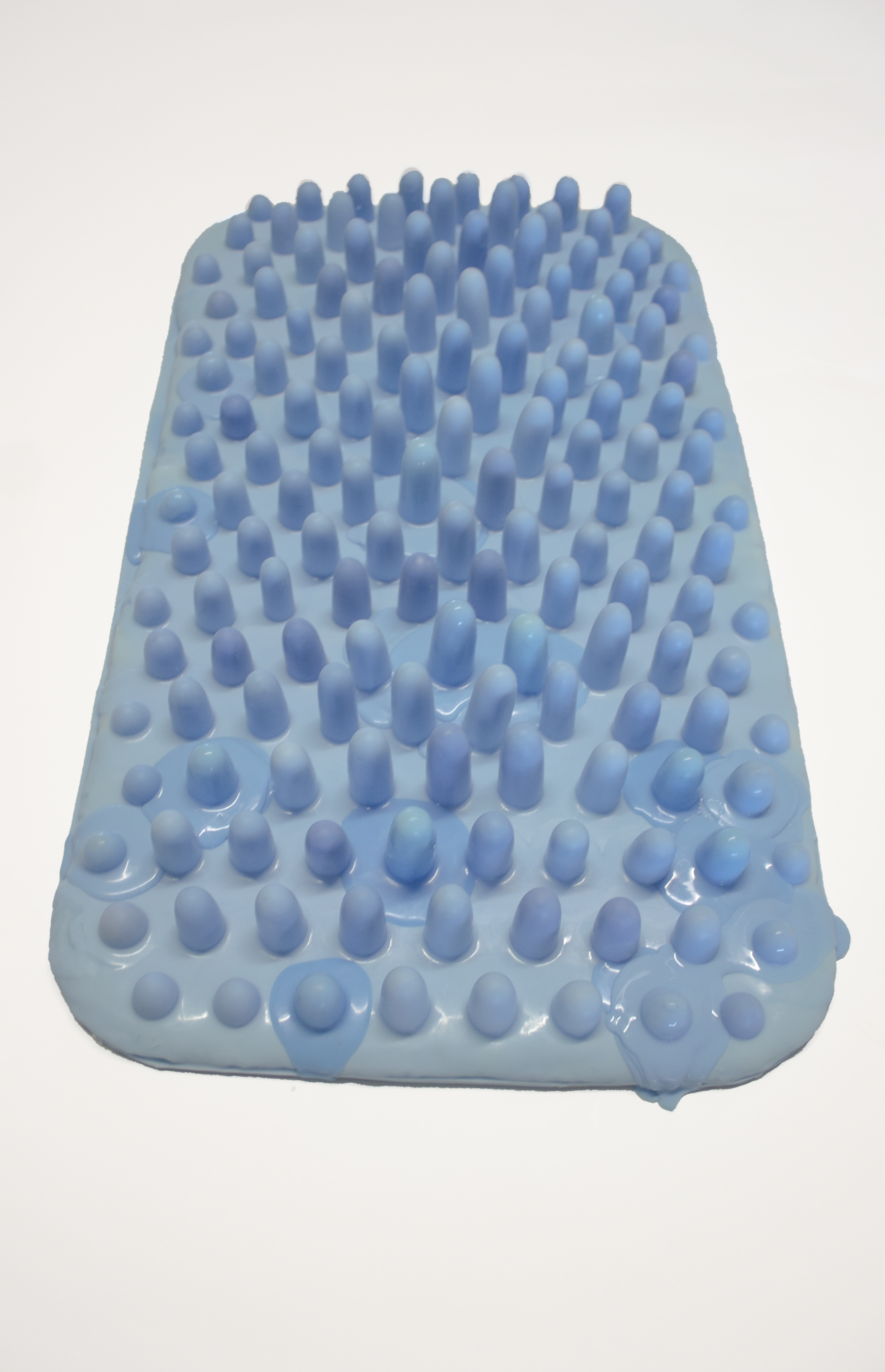
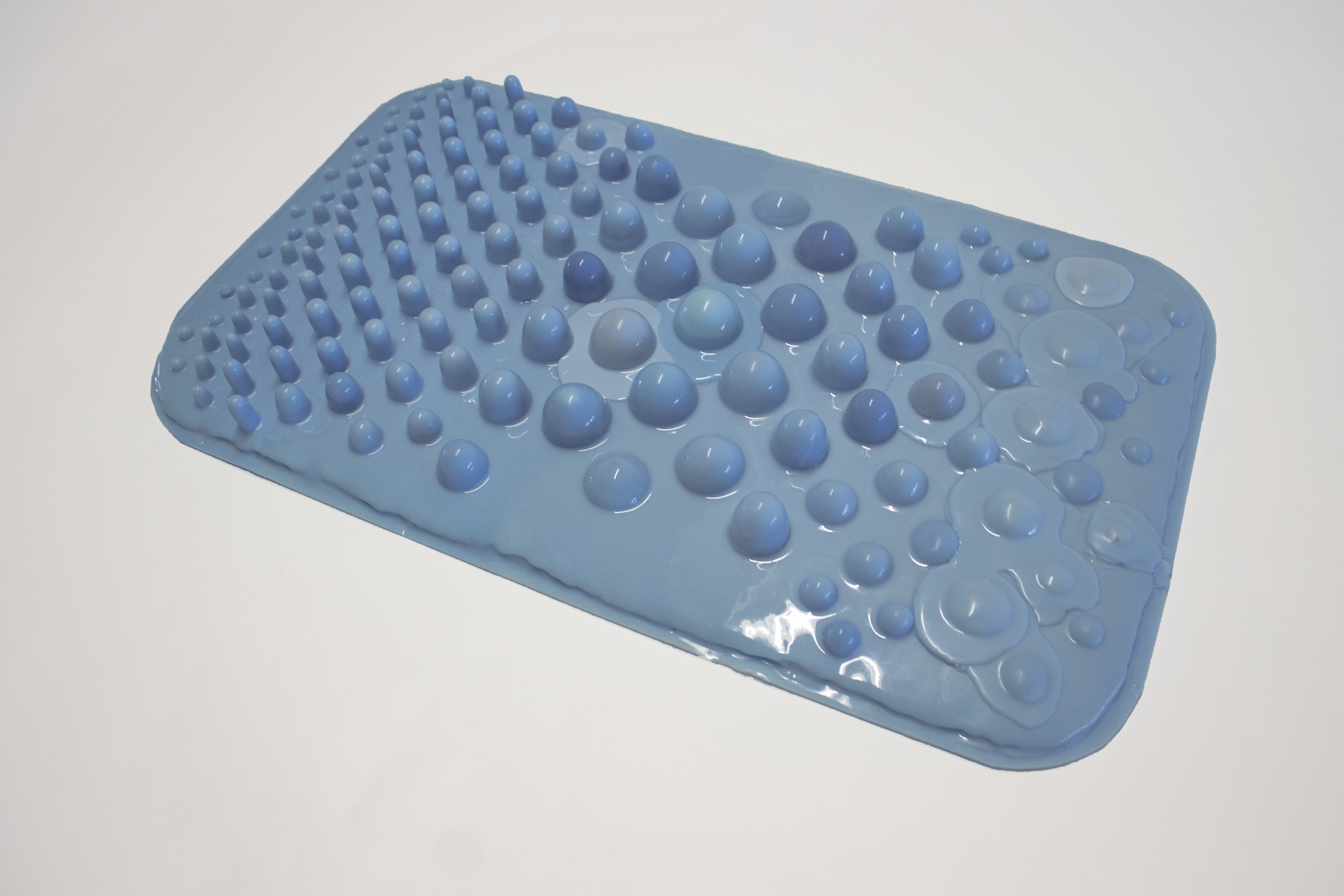
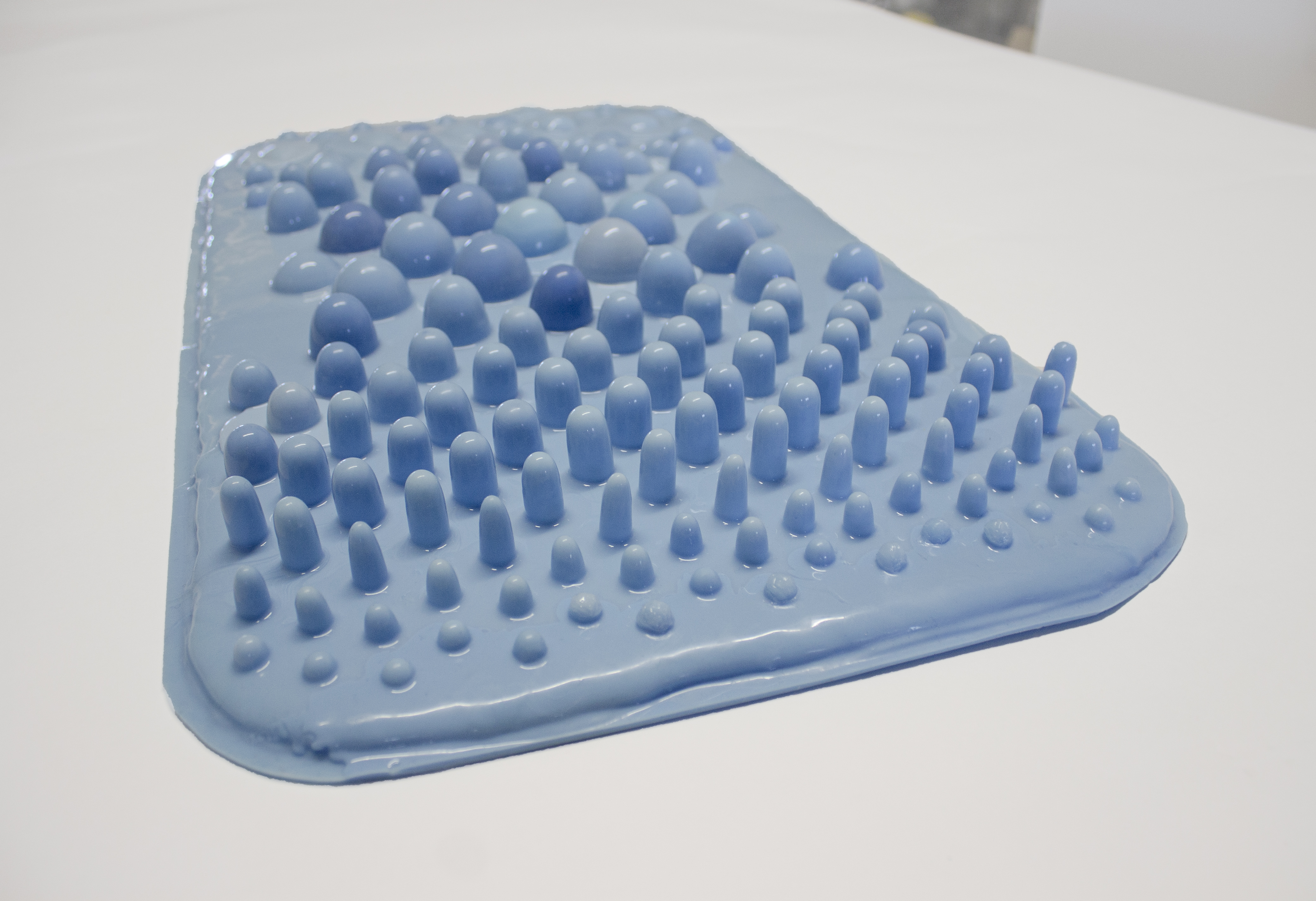
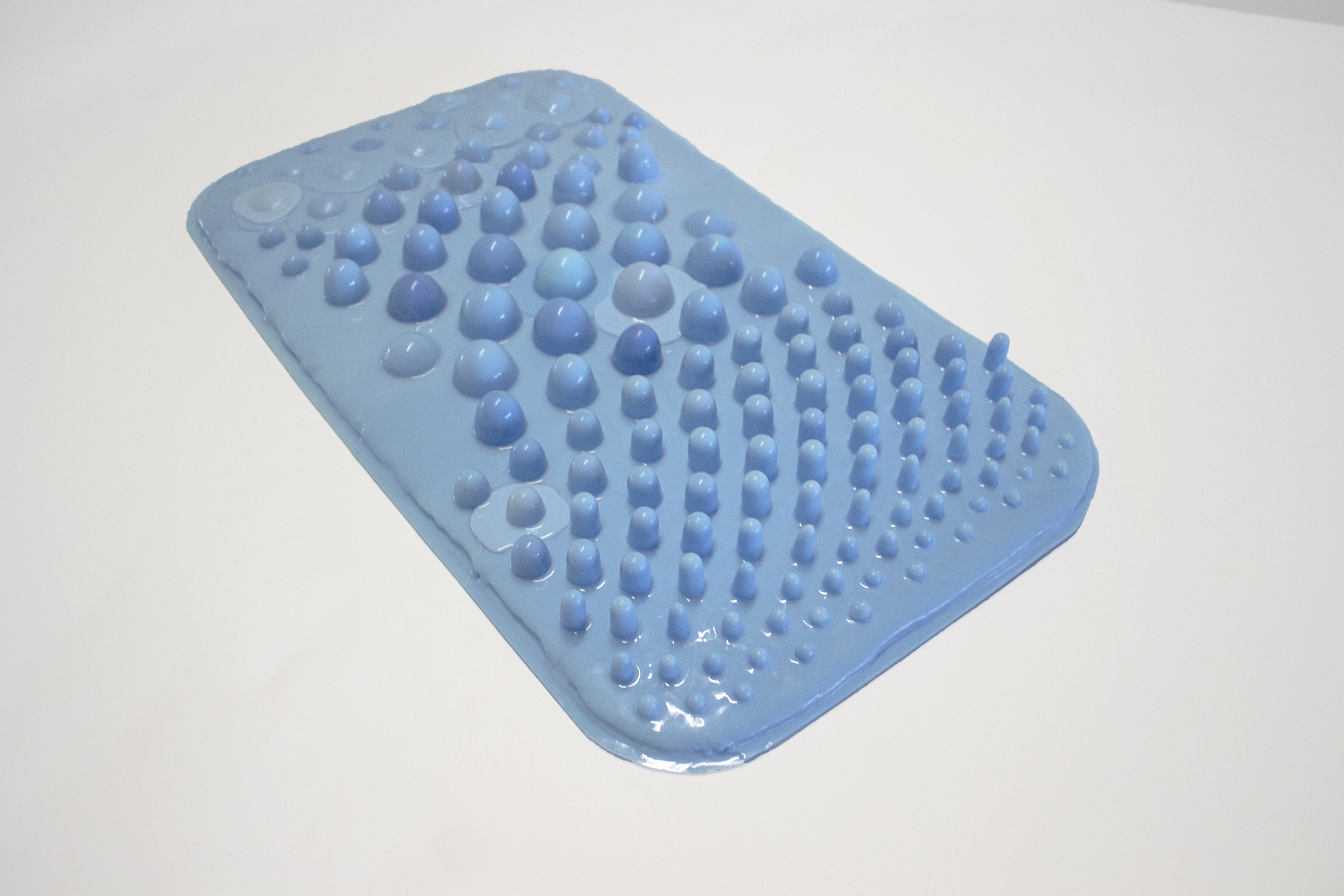
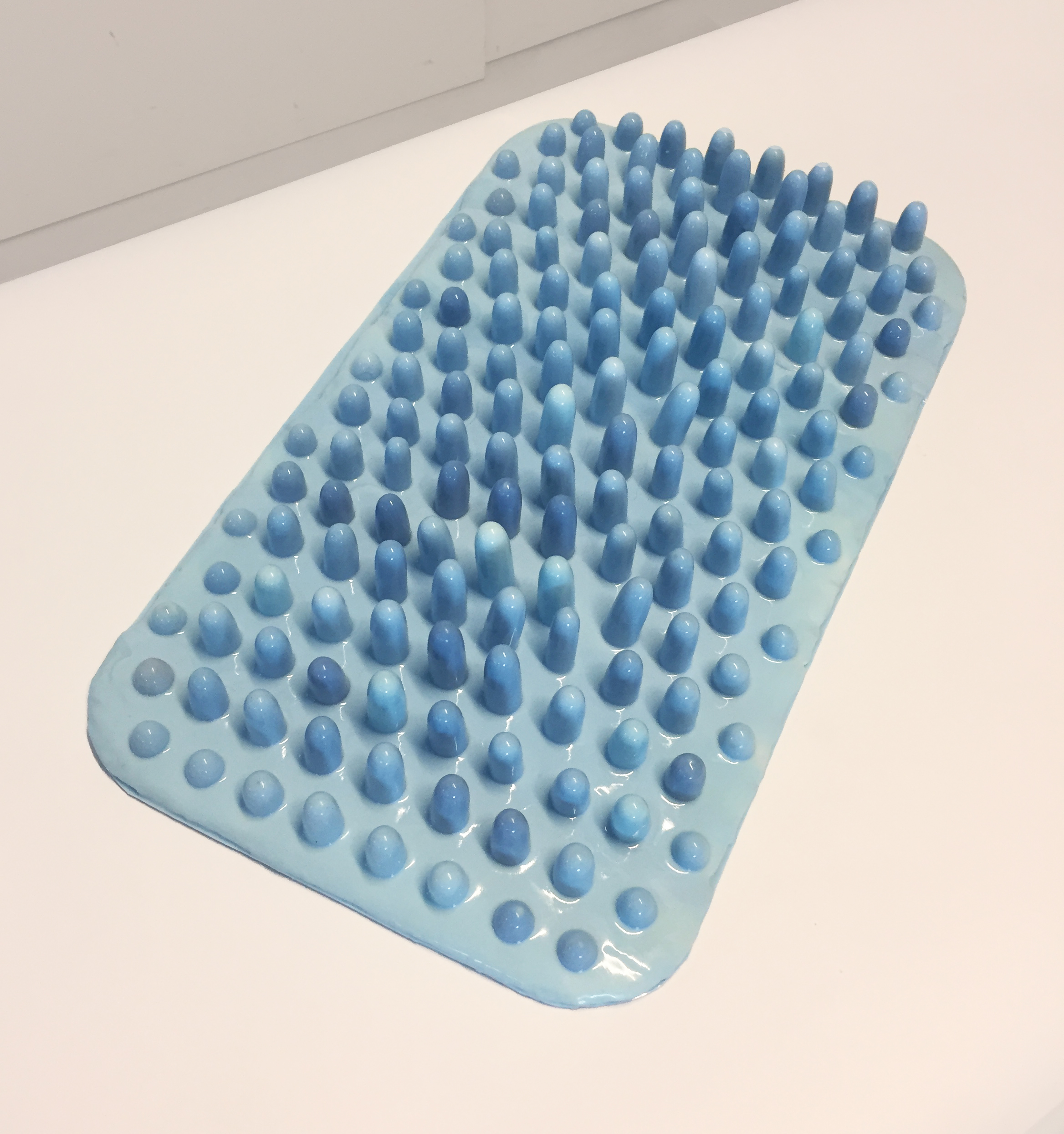
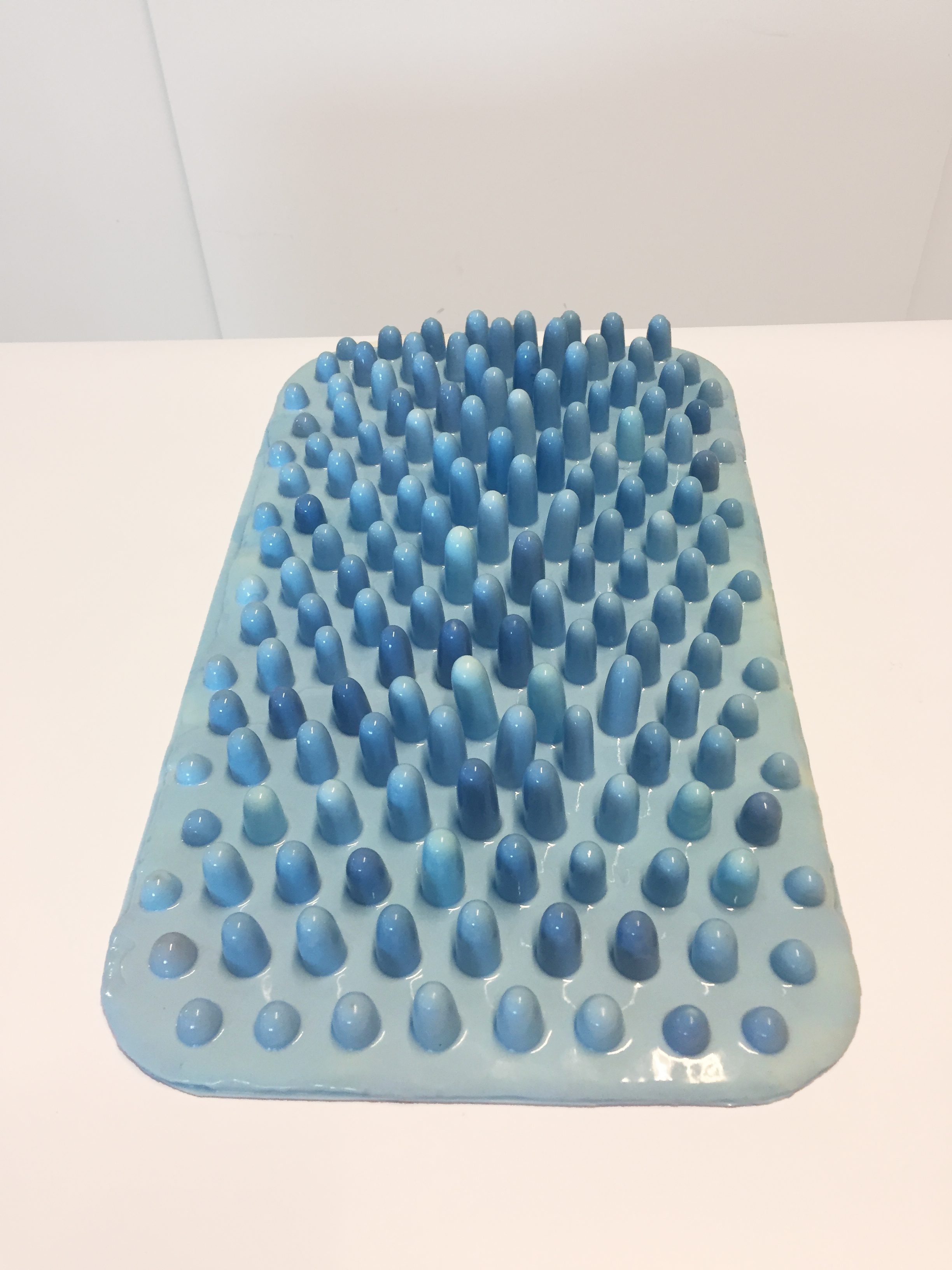
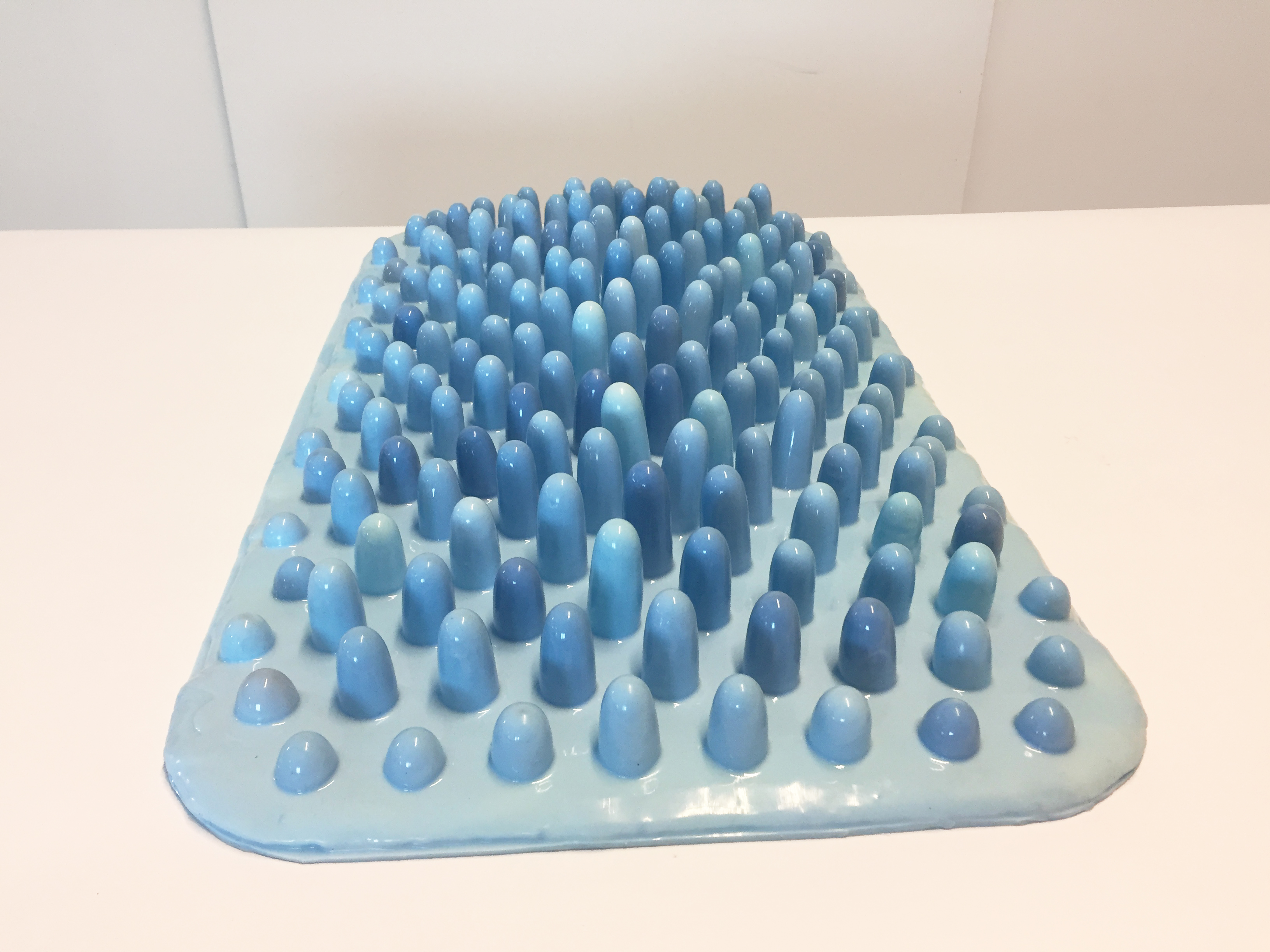
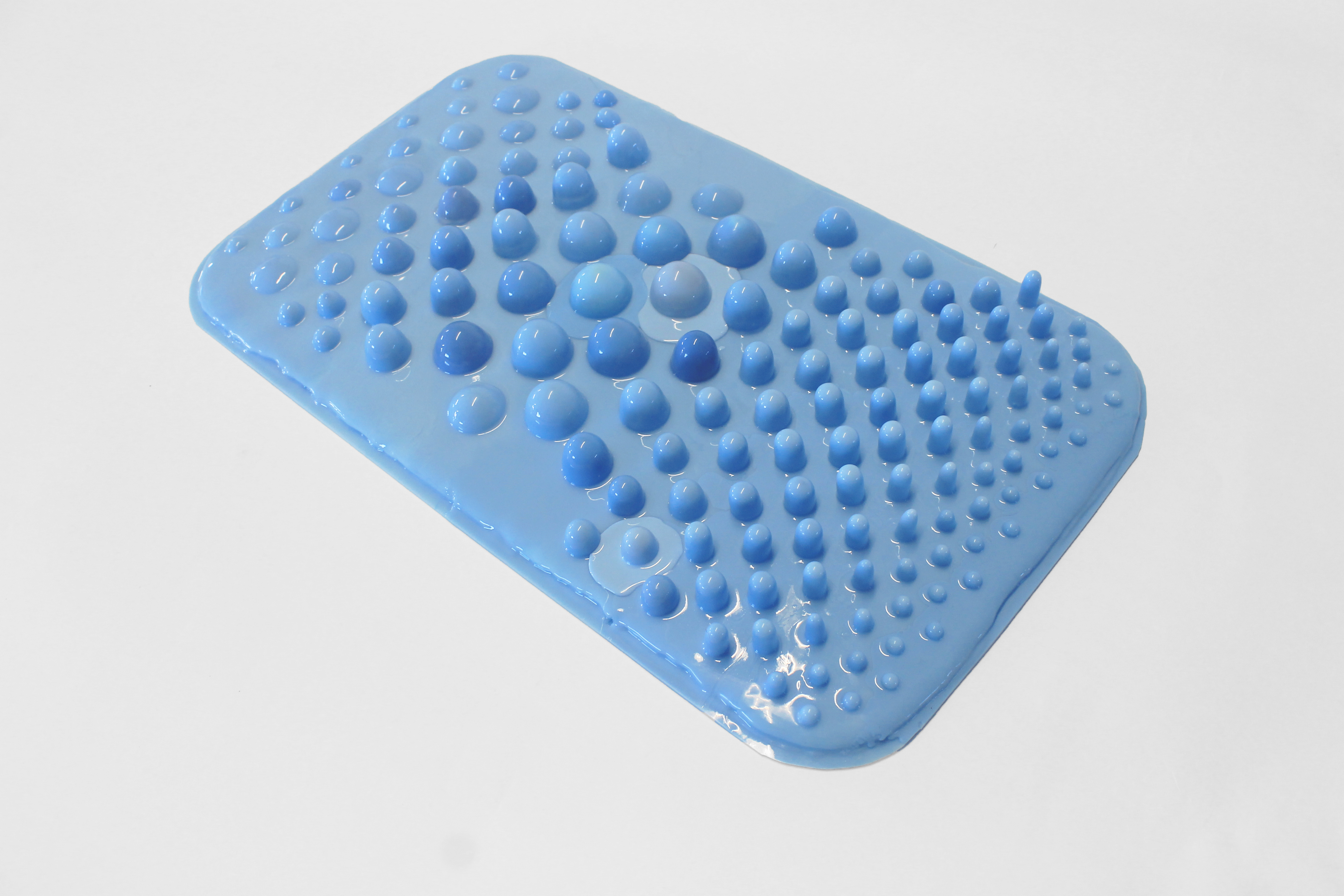
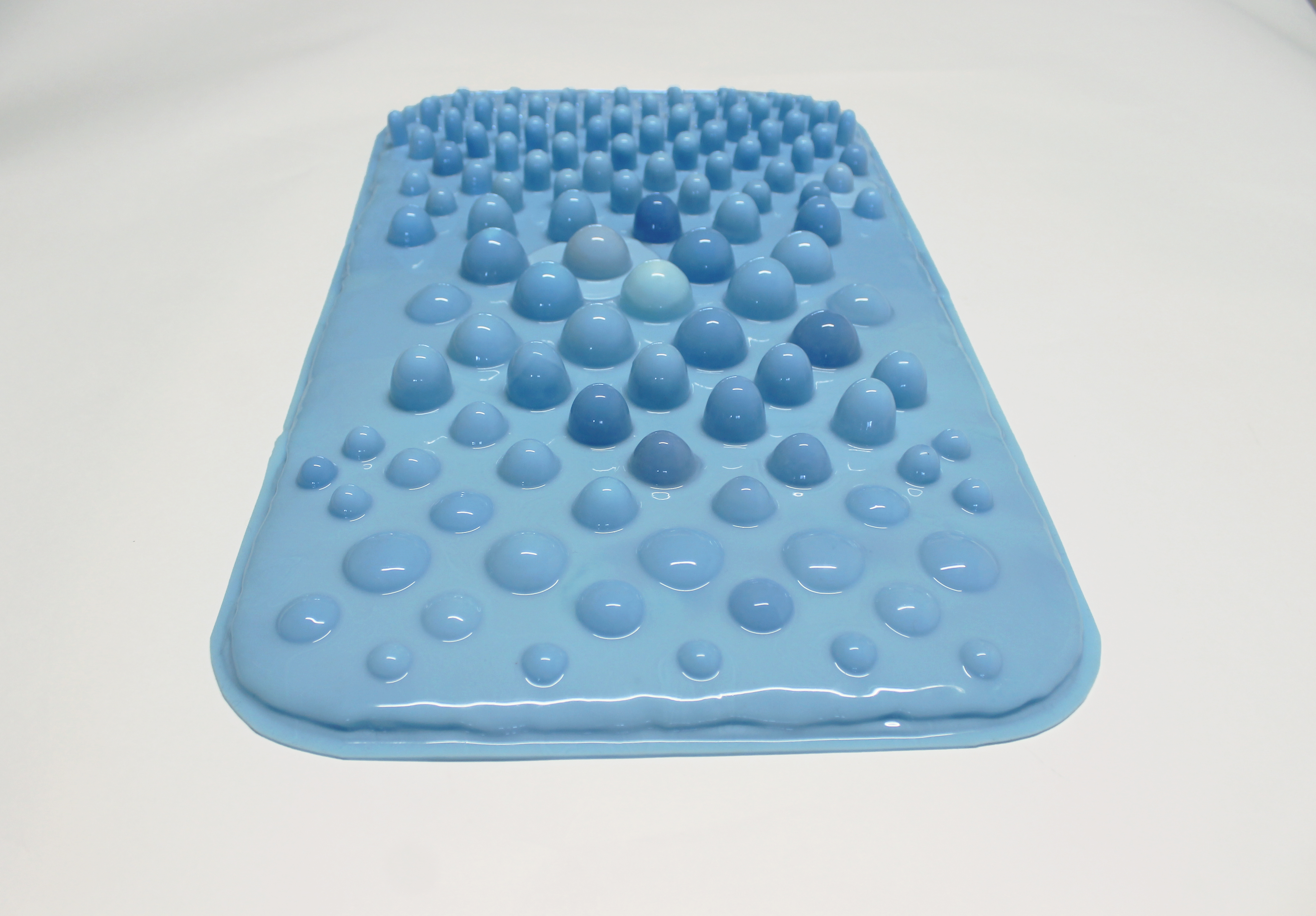
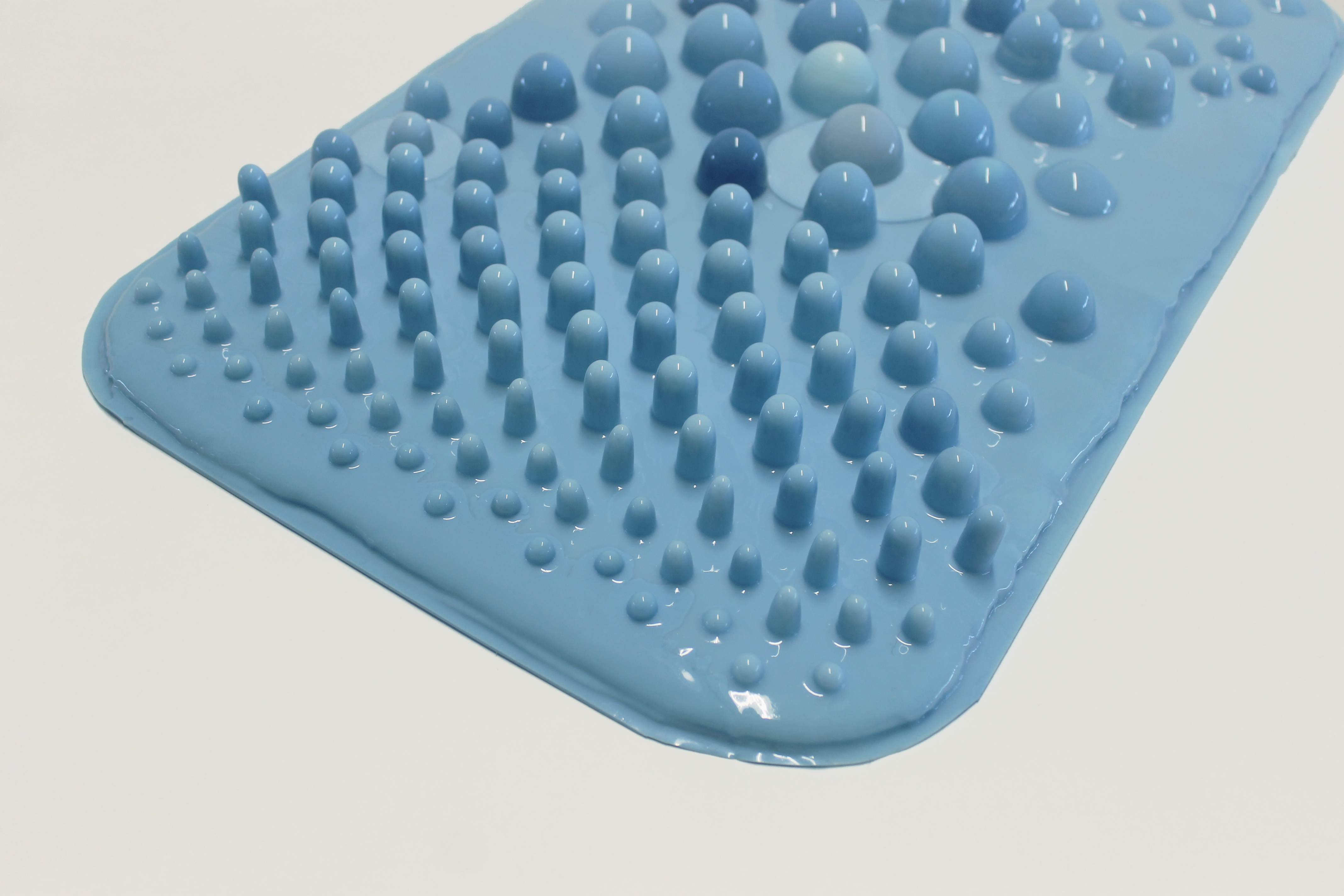
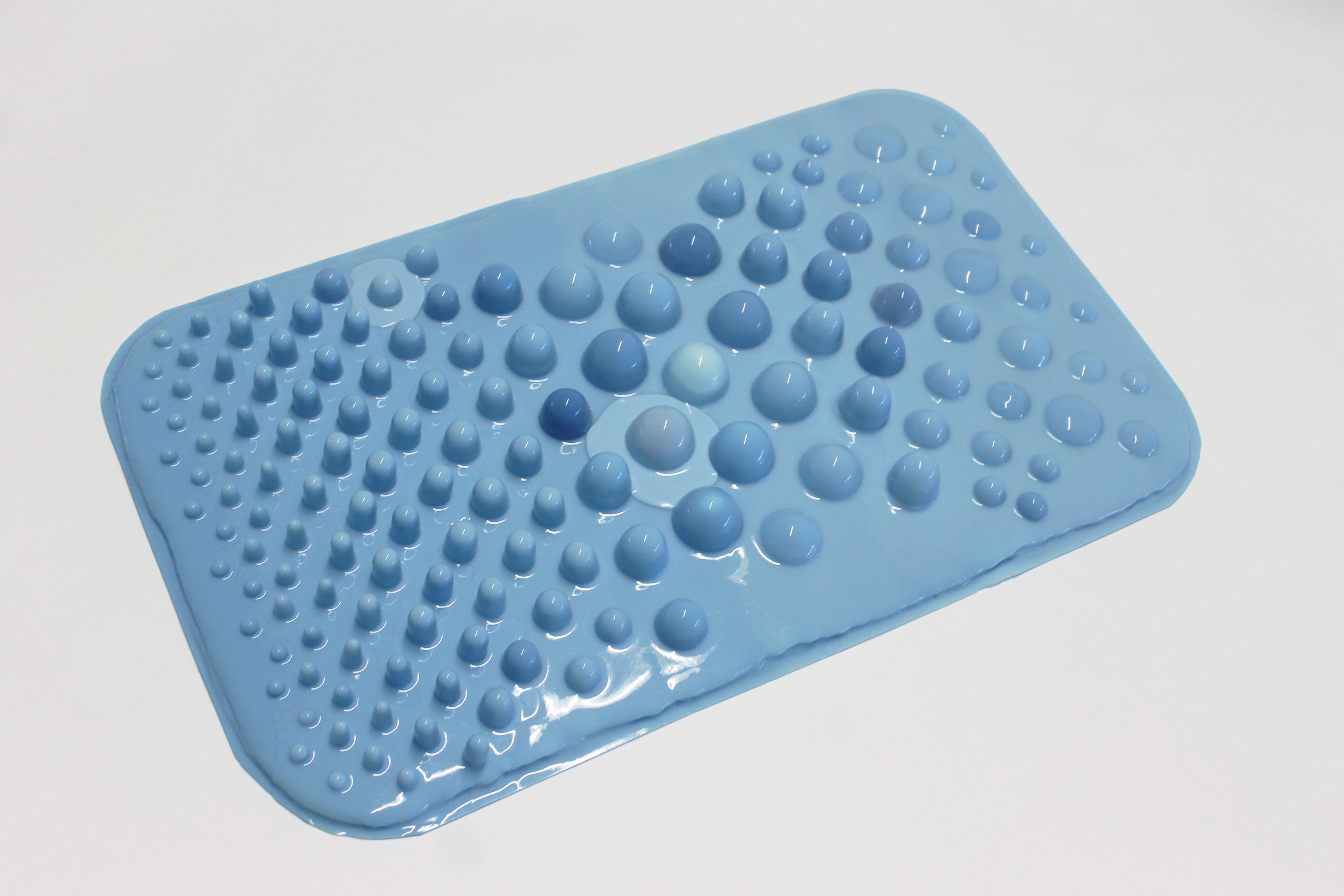
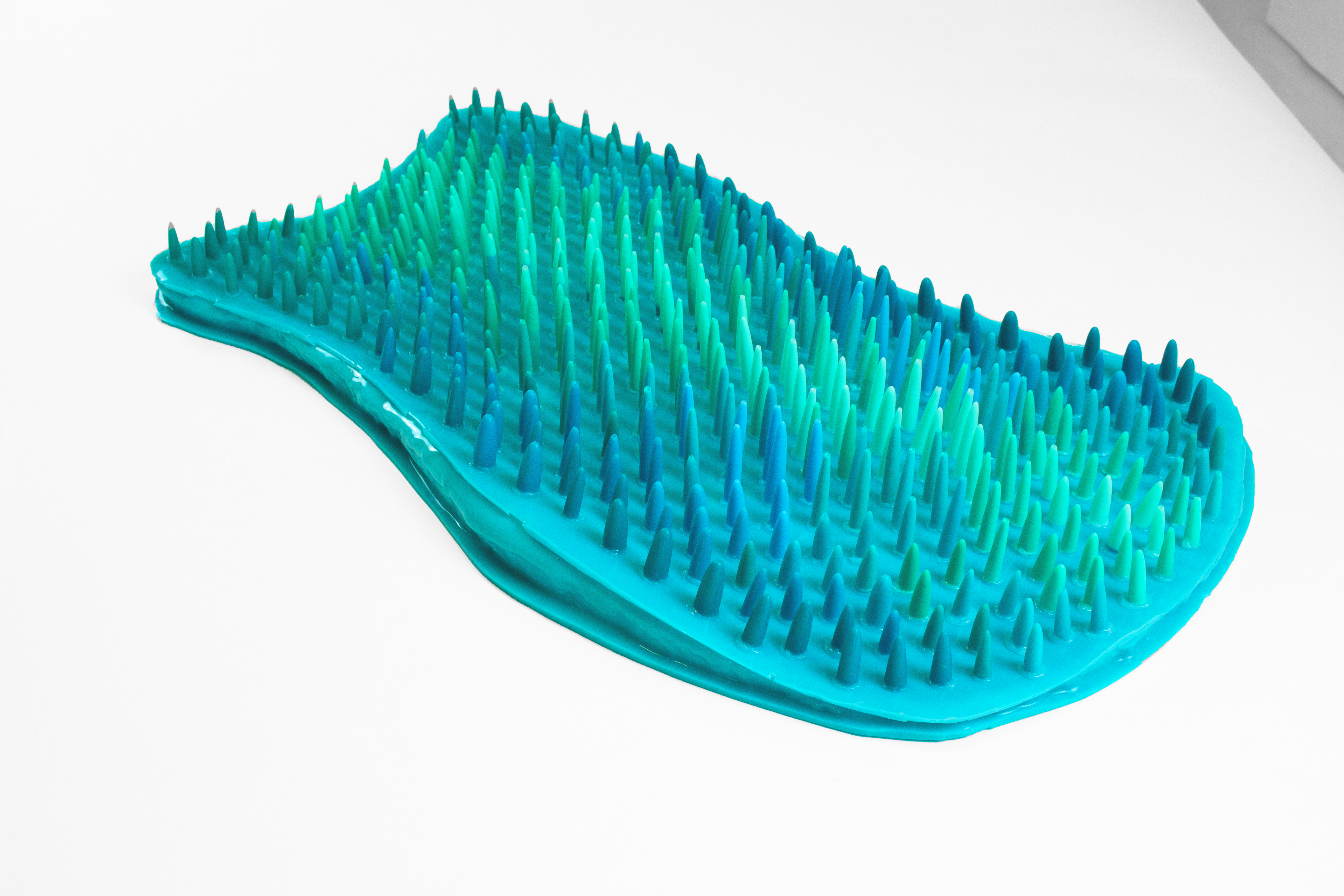
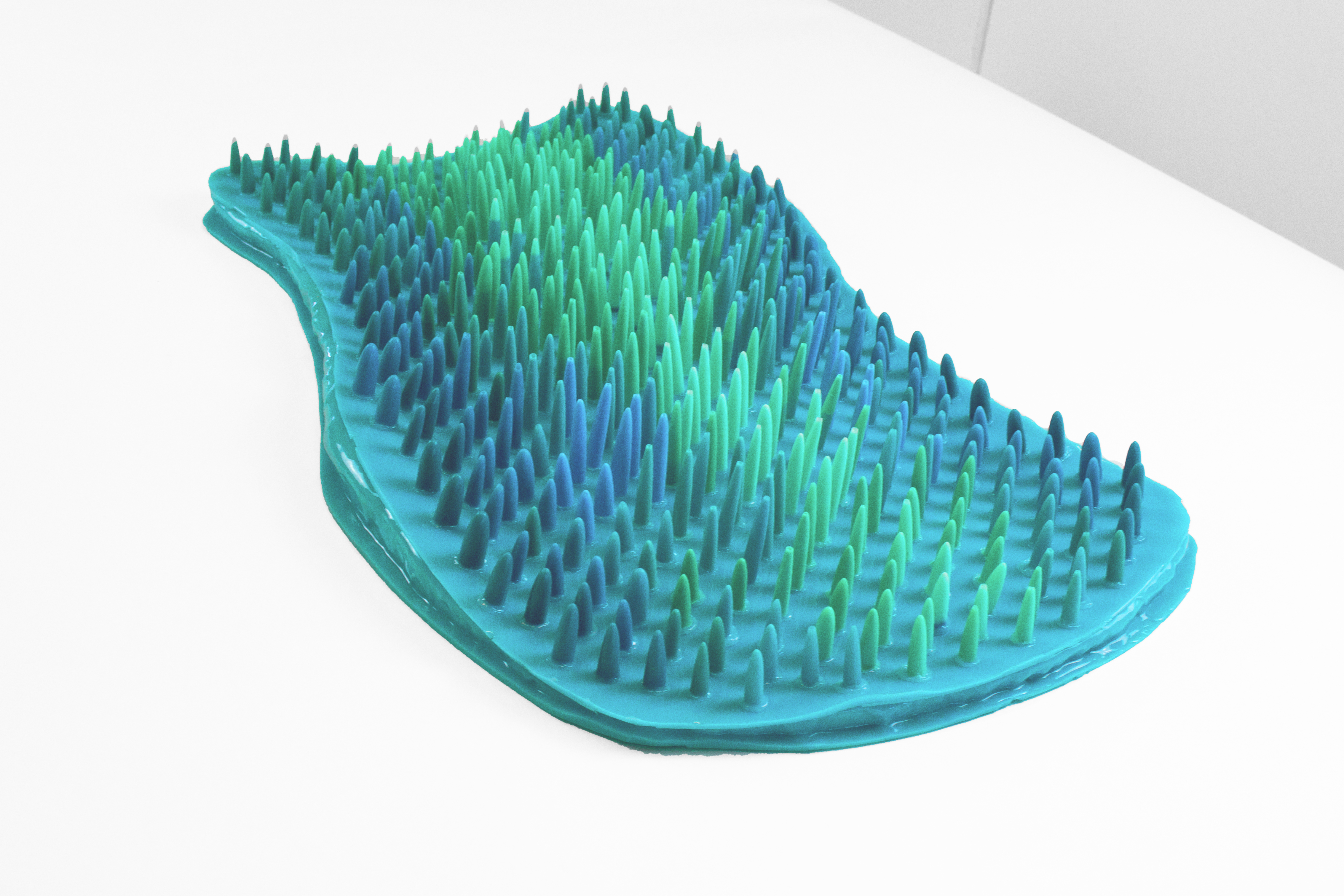
TACTimat is part art, part therapy tool for children with Autistic Spectrum Disorder (ASD), utilizing haptic stimuli to address the needs of hyper and hyposensitive children. TACTimat is a continuation of a previous artwork by Laura A Dima and namely “The Finger Rub Rug” after a child physiotherapist indicated the potential of its material properties and shape for practice.
The research: Children with ASD have difficulty processing stimuli and quickly exhibit stress responses to unfamiliar or complex stimuli. Few therapeutic tools help regulate sensory stimulation, other than “sensory rooms” -- controlled environments with curated stimuli. Yet, these often induce over-stimulation or anxiety in ASD children. Moreover, the rooms are not portable, reducing access to limited locations and times. Play and the use of toys has been shown effective in treating tactile sensitivity dysfunctions, utilizing common toy shapes and materials. Less understood is the role of biomimetic materials and shapes, and of tactile stimuli during play and therapy which is the focus of TACTimat.
The TACTimat is a sculpture from which flexible, silicone shapes (buttons) rise. Their shape and grid composition were chosen to be aesthetically pleasing and to invite exploration through touch. The buttons rely on biomimetic inspiration (inspired by body parts, in the case of the first prototype each button is approximating the dimensions of human fingers.) While the shape is mostly fixed, they differ in height, density, and tip profile. Most of these tactile qualities are apparent by just looking, while to discover others, like density and texture, one has to effectively touch them.
During test and therapy sessions, children focused only on the mat. This focused state had a relaxing effect on children with a cognitive disability or ASD. All children displayed exploratory behaviour such as caressing, squeezing, and pressing, validating that tactile exploration was occurring and that such exploration was in line with abled-bodied users. Other behavioural patterns were: walking over the mat; stroking multiple buttons; pulling or tipping them; pressing with the foot, and picking up the whole mat. Taller buttons resulted more often in walking, grabbing, and stroking behaviour, while shorter buttons were often pressed on with a thumb.
The most evident validation came from three children with a cognitive disability or ASD, who were first walking high on their toes – an ASD behaviour indicating insufficient stimulation. Once they engaged with the TACTimat, they began walking on the complete sole of their foot on the surface. Additionally, balance-deficient children happily trained their balance and a girl with a clubfoot trained her proprioception. Taller buttons, sharper tips, and a higher density of buttons seem to provide more intense stimuli.
- Physiotherapist (Kubus Kinderpraktijk) Rita van de Sande, 2021
- Intermediary art and science Kikki de Laat, 2021
- User tests and research by Marjolein Schoorl, 2021
- Supervisor Professor Erik Tempelman, TU Delft, 2021
- Special thanks to VibeResearch Lab, TU Delft IDE
- Test Panel: 's Heeren Loo, Apeldoorn, 2022
- Thanks to co-writers: Marjolein Schoorl, Kikki de Laat, Erik Tempelman, Daniel Shor, Gijs Huisman
Related shows:
-
30.03.2024: Not to be Senseless- iii workspace (instruments inventors intitative)
- Group Show
-
07.07.2022: opening Care Design Lab until 20.06.2022- Care Design Lab
- Group Show
























































